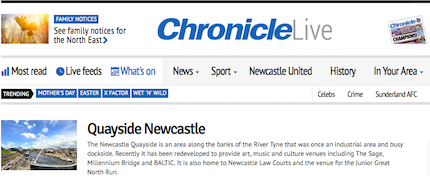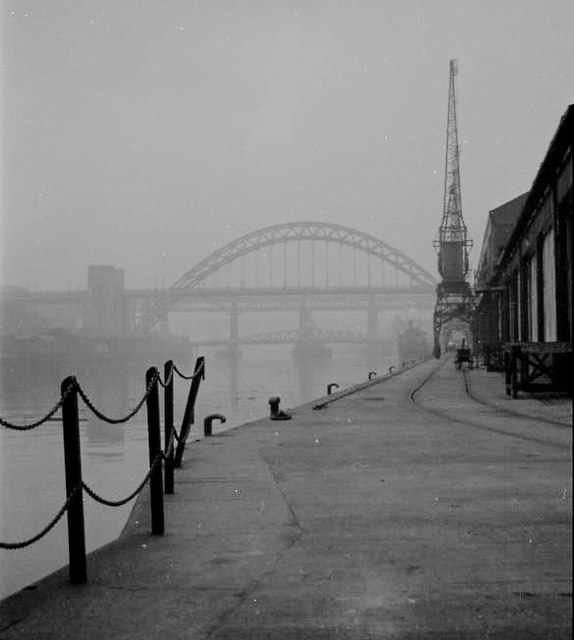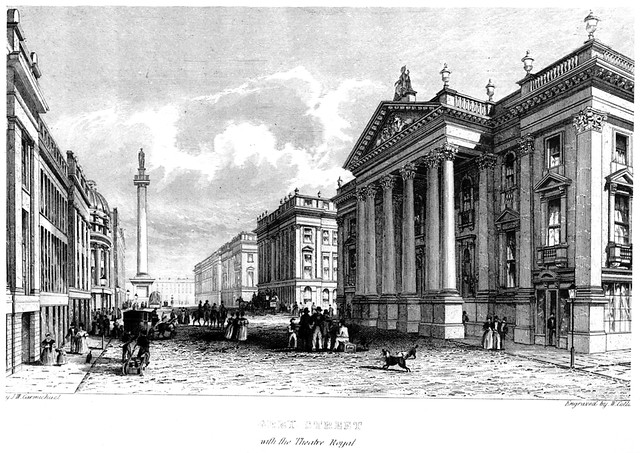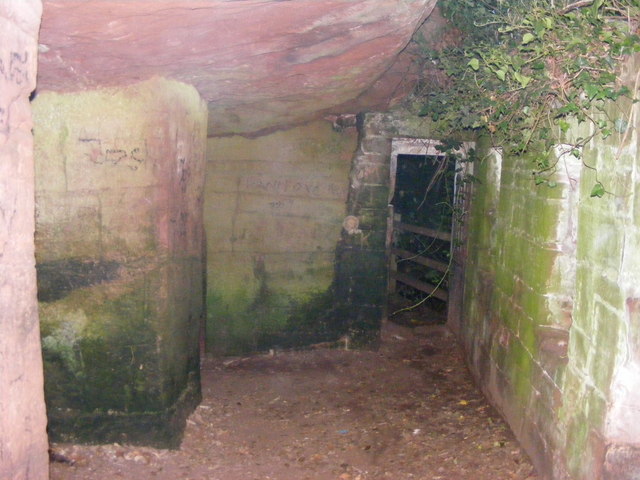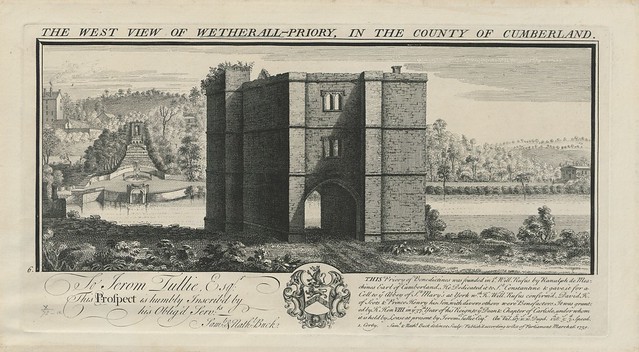Newcastle Quayside

-
Description
My grandma and I have many memories of Newcastle Quayside but today it is very different to earlier times when my Grandma was aged 12. When my grandma was a child the Quayside was a very busy working port with huge overhead cranes that ran along the quayside on rails. Ships docked along the River Tyne on the Quayside from other countries, bringing fresh fruit, vegetables and drinks (whisky). Men called "Dockers" were employed to unload the goods and operate the cranes to lift the heavy goods off the ships then stored them in warehouses before transporting the goods to other cities around the country. On Sunday's crowds gathered to buy cheap clothing from Paddy's Market, where people sold used clothes. There were lots of stalls that sold china, bedding and cutlery. Grandma's brother often won pretty glass bowls by rolling a ball down a board and scoring 100. There was also an escapologist who attracted crowds who cheered him on to become free from the sack and chains wrapped around him. As a child my Grandma lived near the Quayside; on foggy nights she could hear the eerie sound of the ships fog horns warning the ships to keep a safe distance to prevent them from colliding. The fog horns were also used as a request for the swing bridge to open to allow the larger ships to continue along the river. One of the things my Grandma didn't like was when the fog horns woke her up during the night, she said they made her feel very lonely and frightened, so she would hide her head under the covers to try to block the sound out. Today there are massive changes to Newcastle Quayside. Buildings have been renovated, the river is much cleaner and the bridges have been cleaned. The millennium bridge was built in 2000; this is an amazing bridge with a beautiful arc. It takes four minutes to open and cost £22 million to build. The River Tyne flows behind West Walker School where grandma worked. The staff were allowed to walk the children along the path to see the bridge slowly being guided along the river by the world’s largest floating crane called Asian Hercules II. She will always remember this amazing site. Lots of exciting things take place on the quayside during the summer months such as pleasure cruises along the River Tyne and the Newcastle boat race. There is also a man made beach and exercise equipment for public use. The Law Courts, The Sage and Baltic as well as many houses and flats are now located along the Quayside, to name a few of the many changes that have taken place since my Grandmas was 12. Mam took me to see the Tall Ships on the Tyne when I was about three years old. Grandma took me to the Quayside market before Christmas but she said it is very disappointing with very little atmosphere and much different from sixty years ago. It is smaller with fewer stalls and isn't as busy or exciting as it used to be. However, it's still a great place for tourists to visit and lots of people love the atmosphere and friendly Geordie welcome! Interview Questions with Anne Crawford (My Grandma) When did you first go to the Quayside? As a child How old were you? 3 years old How long did you spend their? 2 hours Were there buses or metros around? Buses How did you get there? Walked Did it cost a lot of money? No, walked to Quayside If so how much? 1 old penny Did you go with friends? No, family -
Owner
evening chronice -
Source
Local (Co-Curate) -
License
What does this mean? Unknown license check permission to reuse
-
Further information
Link: http://www.chroniclelive.co.uk/all-about/quayside-newcastle
Resource type: Text/Website
Added by: Bethany Foster
Last modified: 10 years, 4 months ago
Viewed: 1137 times
Picture Taken: Unknown -
Co-Curate tags
